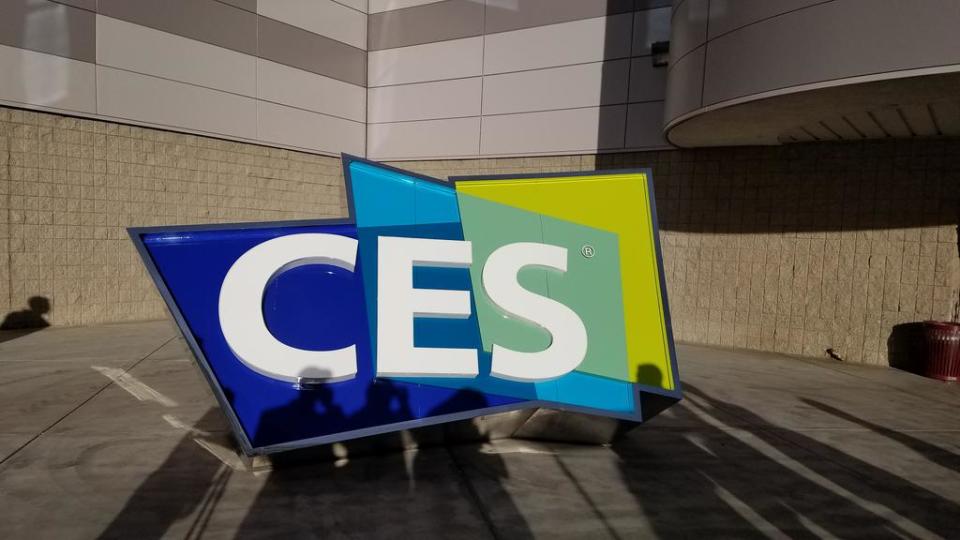The 4 Top Trends of CES 2017

With New Year's festivities now firmly in the rear-view mirror, this week the consumer electronics industry will collectively showcase all of its innovations for the year to come – and beyond. CES 2017 will be a fleeting glimpse into the future of technology. While the show officially begins tomorrow morning, the past couple of media days have been full of intriguing announcements and gadgets unveiled at media events.
Smartphone growth may have plateaued as mobile is now ubiquitous, but the IoT is continuing to emerge and there are a number of promising other technologies that will be on display. Here are the top 4 trends I've been seeing before it kicks off:
1. Artificial Intelligence is Becoming Ambient
What struck me in the sessions that I've attended and the discussions I've had is the degree to which the consumer electronics industry is trying to embed artificial intelligence within everything.
Almost every announcement I've seen this year has some element of AI involved, whether it involves the connected car, IoT, smart home, robotics, etc. For example, the FT's Tim Bradshaw showcased some interesting AI-powered innovations in a video from CES Unveiled. And that's just the tip of the iceberg. Expect it to be a layer that sits on top of everything else.
2. Everything in the Home is Getting Smart
There are now toothbrushes with "embedded AI". Let that sink in. Wiithings also created a connected hair brush for L'Oreal that can detect your brushing patterns to fix hair issues. Just what the world needs.
But there are also going to be a number of connected devices that improve everyday life. Alarm.com, for instance, introduced the concept of a security drone to help consumers better monitor their homes by investigating anything that triggers its system. GE announced C, its elegantly-designed Alexa-enabled smart lamp, showing that smarts can go in more types of devices than speakers. Catspad will keep your cats fed. Sleep Number's 360 auto-adjusting bed that promises to give you a comfy nights' sleep no matter how much you toss and turn.
There will be myriad iterations on these concepts and each one will add a new piece of intelligence to the home. Soon, everything in the home will have connectivity potential - for good and bad.
3. Connected Cars are Roaring Onto the Scene
The connected car is well on its way to entering garages everywhere in the near future, and the self-driving innovations that have been shown highlight that the auto industry is innovating rapidly, embedding both intelligence and connectivity to meaningfully improve the driving experience.
For example, Faraday Future generated a lot of mostly positive buzz with the unveiling of its FF 91 self-driving car. Although there were hiccups on stage, what they showed was a potential Tesla competitor with a sleek design, advanced connectivity capabilities and an intriguing autonomous mode. Honda's NeuV concept car will have emotional recognition to built in and Toyota had a similar idea with the concept car it showcased that has AI built in (there's that concept again). Hyundai's Mobility Vision concept links the car with the smart home to share AC or heating duties, act as extra space for sitting or provide emergency power.
While the auto industry is heading in a number of different directions, it's clear that the car of the future will look very different and be a lot smarter than the ones we drive today.
4. VR and AR are Now a Reality
The first VR headsets are already available for consumers. Sony's Playstation VR has been available for several weeks now, joining the ranks of Oculus, HTC Vive, Galaxy Gear VR, Google Daydream and more, and may very well help to make VR more widespread. For VR now, it's all about creating engaging content and killer apps for consumers, and we'll see those on full display at the show, as Intel showed during its keynote. Lots of cameras and accessories that improve the VR experience will also be displayed, such as the Vuze VR camera and Holo Cube.
For AR, a number of devices will be shown that will help to change the way consumers see the world. While the space is filled with a lot of hype at the moment (consider the case of ODG's R-8 and R-9 VR glasses), true innovations will surface themselves. Vuzix's cloud-enabled Blade 3000 will help consumers take entertainment wherever they go, Occipital Bridge links the VR and AR worlds together and Lenovo's New Glass C200 shows promise for the enterprise, for example.
Robots are Getting More Personal Than Ever
While the robotics space was also very hot at CES last year, the sheer breadth of personal robotics innovation on display will show that capable, intelligent and emotional robots are coming ever closer to entering homes everywhere.
Kuri from Mayfield Robotics is a cool $700 robot that has emotive eyes, takes pictures and photos and has AI built in to foster friendly interactions with its family members. Olly takes a very different approach and reminds me of a blend of Amazon Echo's intelligence and Jibo's movement, with advanced AI and cognitive capabilities to learn from interactions. LG is even getting in on the robotics action with its Hub Robot that uses Alexa to communicate with other smart devices.
Robots and the AI within them are getting smarter, costs are coming down and the variety of form factors that are tailored to individual needs will encourage consumer and business adoption. Expect every flavor of robotics to be showcased, including some unexpected ones.
Combined, all of these trends show that the world is rapidly becoming more connected, and each of them ties into the others. A sci-fi dream world isn't far off, and CES will help to take us there.
